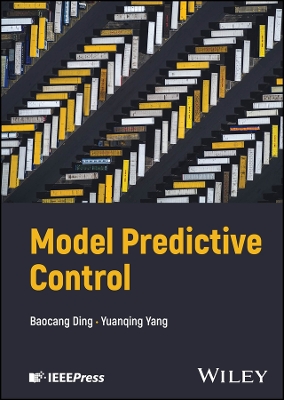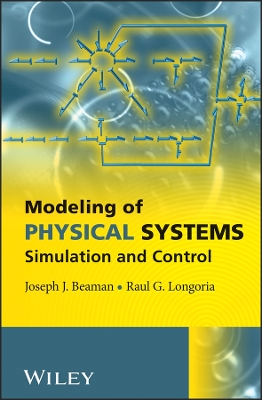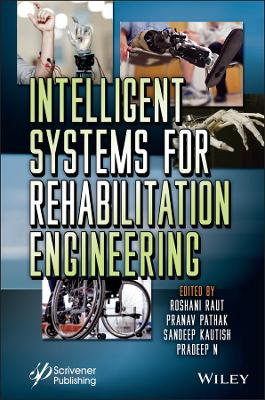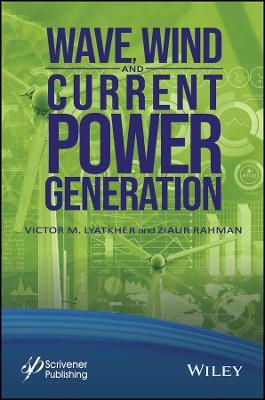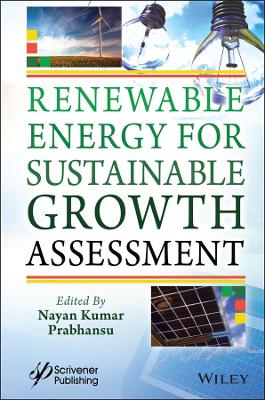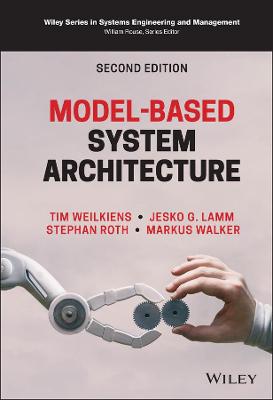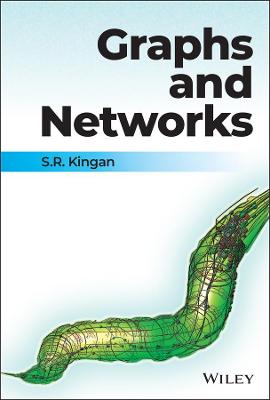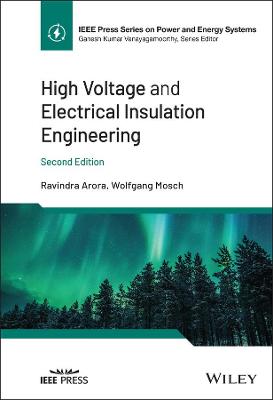Electromagnetic Analysis and Condition Monitoring of Synchronous Generators
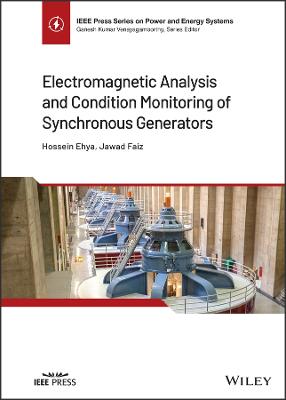 -15%
portes grátis
-15%
portes grátis
Electromagnetic Analysis and Condition Monitoring of Synchronous Generators
Ehya, Hossein; Faiz, Jawad
John Wiley & Sons Inc
12/2022
704
Dura
Inglês
9781119636076
15 a 20 dias
666
Preface
Chapter 1 Introduction
1.1. Introduction to Condition Monitoring of Electric Machines
1.2. Importance of Synchronous Generators
1.3. Economic Aspects and Advantages
1.4. Intention of the Book
Chapter 2 Operation Principles, Structure, and Design of Synchronous Generators
2.1. Introduction
2.3. Types and Constructions of Synchronous Machines
2.4. Voltage Equation and Rated Power of the Synchronous Generator
2.5. Synchronous Generator Model Parameters
2.6. Different Operating Modes of Synchronous Machines
2.7. Damper Bars in Synchronous Generators
2.8. Losses and Efficiency in Synchronous Generators
2.9. High-Voltage Synchronous Generators
2.10. Preliminary Design Considerations
2.11. Stator Design Considerations
2.12. Summary
Chapter 3 Transformed Models and Parameter Identification of Synchronous Generators
3.1. Introduction
3.2. Multi-Phase Synchronous Generator Modeling Based on Park Equations
3.4. Parameter Estimation Algorithms
3.5. Parameter Accuracy Increments by Considering Saturation
3.6. Fault Detection Based on Parameter Deviation
3.7. Summary
Chapter 4 Introduction to Different Types of Faults in Synchronous Generators
4.1. Reasons for Condition Monitoring of Synchronous Generators
4.2. Different Faults in Synchronous Generators
4.3. Main Factors Leading to Electrical Machine Damage
4.4. Major Destruction Factors of Stator Winding
4.5. Common Faults in Stator Winding
4.6. Rotor Field Winding Fault
4.7. Eccentricity Faults
4.8. Misalignment Faults
4.9. Damper Winding Fault
4.10. Summary
Chapter 5 Laboratory Scale Implementation
5.1. Introduction
5.2. Salient Pole Synchronous Generator
5.3. Induction Motor
5.4. Gearbox
5.5. Converter
5.6. Rotor Magnetization Unit
5.7. DC Power Supply
5.8. Local Passive Load
5.9. Sensors
5.10. Data Acquisition
5.11. Fault Implementation
5.12. Noise Considerations
5.13. Summary
Chapter 6. Analytical Modeling Based on Wave and Permeance Method
6.1. Introduction
6.2. Eccentricity Fault Definition
6.3. The Air Gap Magnetic Field
6.4. The Electromotive Force in Stator Terminals
6.5. The Stator Current
6.6. Force Density and Unbalanced Magnetic Pull
6.7. Stator Slotting Effects
6.8. Magnetic Saturation Effects
6.9. The Mixed Eccentricity Fault
6.10. The Air Gap Magnetic Field
6.11. Induced Electromotive Force in Stator Terminals
6.12. Force Density and Unbalanced Magnetic Pull
6.13. Short Circuit Modeling
6.14. Air Gap Permeance Under a Short Circuit Fault
6.15. Force Density and Unbalanced Magnetic Pull under a Rotor Inter-turn Short Circuit Fault
6.16.Summary
Chapter 7 Analytical Modeling Based on Winding Function Methods
7.1. Introduction
7.2. History and Usage of the WFM
7.3. Winding Function Modeling of a Synchronous Generator
7.4. Mutual Inductance Calculation Between the Stator Phases
7.5. The Mutual Inductance Between the Stator and Rotor
7.6. The Self Inductance of the Rotor
7.7. Derivative Forms of Synchronous Generator Inductances
7.8. A Practical Case study
7.9. Healthy Case Simulation
7.10. Faulty Case Simulation
7.11. Algorithm for Determination of the Magnetic Saturation Factor
7.12. Eccentricity Fault Modeling Considering Magnetic Saturation Under Load Variations
7.13. Dynamic Modeling under an Eccentricity Fault
7.14. Summary
Chapter 8. Finite Element Modeling of a Synchronous Generator
8.1. Introduction
8.2. Electromagnetic Field Computation
8.3. Eddy Current and Core Loss Considerations
8.4. Material Modeling
8.5. Band Object, Motion Setup, and Boundary Conditions
8.6. Mesh Consideration
8.7. Time Steps and Simulation Run Time
8.8. Transient and Steady-State Modeling
8.9. No-Load and On-Load Modeling
8.10. 2D and 3D FEM
8.11. 3D-FE Equations of the Synchronous Generator
8.12. Modeling of the Stator and Rotor Windings of the Generator and Its Load
8.13. Air Gap Magnetic Field Measurements
8.14. Stray Flux Measurements
8.15. Eccentricity Fault Modeling
8.16. Stator and Rotor Short Circuit Fault
8.17. Broken Damper Bar Modeling
8.18. Summary
Chapter 9 Thermal Analysis of Synchronous Generators
9.1. Introduction
9.2. Overview of Thermal Modeling and Analysis
9.3. Thermal Modeling and Analyzing Synchronous Generators
9.4. Modeling and Analysis of Faulty Synchronous Generators
9.5. Summary
Chapter 10 Signal Processing
10.1. Introduction 2
10.2. Signals
10.3. Fast Fourier Transform
10.4. Fast Fourier Transform with an Adjusted Sampling Frequency
10.5. Short-Time Fourier Transform
10.6. Continuous Wavelet Transform
10.7. Discrete Wavelet Transform
10.7.1. Wavelet Energies
10.7.2. Wavelet Entropy
10.8. Hilbert-Huang Transform
10.9. Time Series Data Mining
10.10. Spectral Kurtosis and Kurtogram
10.11. Noise
10.12. Summary
Chapter 11 Electromagnetic Signature Analysis of Electrical Faults
11.1. Introduction
11.2. General Introduction to Short Circuit Fault Detection Methods in Synchronous Machines
11.3. Stator Short Circuit Fault Types
11.4. Synchronous Generator Stator Fault Effects
11.5. Fault Diagnosis Methods in the Stator Winding
11.6. Stator Short Circuit Fault Detection of Brushless Synchronous Machines
11.7. Stator Short Circuit Fault Detection of Powerformers
11.8. Stator Short Circuit Fault Detection of Turbo-generators
11.9. Inter-turn Short Circuit Fault in Rotor Field Winding
11.10 Summary
Chapter 12 Electromagnetic Signature Analysis of Mechanical Faults
12.1. Introduction
12.2. Eccentricity Faults
12.3. Stator Core Fault
12.4. Broken Damper Bar Fault
12.5. Summary
Chapter 13 Vibration Monitoring
13.1. Introduction
13.2. Condition Monitoring Using Vibration
13.3. Vibration in Salient-Pole Synchronous Generators
13.4. Introduction to Utilized Terms in Vibration Analysis
13.5. Force and Vibration Analysis
13.6. Summary
Chapter 14 Application of Machine Learning in Fault Detection
14.1. Introduction
14.2. Supervised Learning
14.3. Ensemble Learners
14.4. Logistic Regression
14.5. K-Nearest Neighbors
14.6. Support Vector Machine
14.7. Decision Tree Learning
14.8. Random Forest 12
14.9. Boosted Trees
14.10. Gradient Boost Decision Trees
14.11. Artificial Neural Network
14.12. Other Artificial Neural Networks
14.13. Real Case Application
14.14. Summary
Chapter 15 Insulation Defect Monitoring
15.1. Introduction
15.2. History and Advantages of Using Partial Discharge Techniques
15.3. Electrical Machine Fault Generation Factors
15.4. Rotating Machine Insulation System
15.5 PD Types in Rotating Machines
15.6. Risk Assessment of Different Partial Discharge Faults
15.7. Frequency Characteristics of Current Pulses
15.8. Measurement of PD Signals
15.9. Online Measurements of PD in Rotating Electrical Machines
15.10. Summary
Chapter 16 Noise Rejection Methods and Data Interpretation
16.1. Introduction
16.2. Noise Rejection in Online Measurement
16.3. Noise Sources in Generators
16.4. Different Methods for Denoising
16.5. Data Interpretation
16.6. Separating PD sources
16.7. Summary
References
Preface
Chapter 1 Introduction
1.1. Introduction to Condition Monitoring of Electric Machines
1.2. Importance of Synchronous Generators
1.3. Economic Aspects and Advantages
1.4. Intention of the Book
Chapter 2 Operation Principles, Structure, and Design of Synchronous Generators
2.1. Introduction
2.3. Types and Constructions of Synchronous Machines
2.4. Voltage Equation and Rated Power of the Synchronous Generator
2.5. Synchronous Generator Model Parameters
2.6. Different Operating Modes of Synchronous Machines
2.7. Damper Bars in Synchronous Generators
2.8. Losses and Efficiency in Synchronous Generators
2.9. High-Voltage Synchronous Generators
2.10. Preliminary Design Considerations
2.11. Stator Design Considerations
2.12. Summary
Chapter 3 Transformed Models and Parameter Identification of Synchronous Generators
3.1. Introduction
3.2. Multi-Phase Synchronous Generator Modeling Based on Park Equations
3.4. Parameter Estimation Algorithms
3.5. Parameter Accuracy Increments by Considering Saturation
3.6. Fault Detection Based on Parameter Deviation
3.7. Summary
Chapter 4 Introduction to Different Types of Faults in Synchronous Generators
4.1. Reasons for Condition Monitoring of Synchronous Generators
4.2. Different Faults in Synchronous Generators
4.3. Main Factors Leading to Electrical Machine Damage
4.4. Major Destruction Factors of Stator Winding
4.5. Common Faults in Stator Winding
4.6. Rotor Field Winding Fault
4.7. Eccentricity Faults
4.8. Misalignment Faults
4.9. Damper Winding Fault
4.10. Summary
Chapter 5 Laboratory Scale Implementation
5.1. Introduction
5.2. Salient Pole Synchronous Generator
5.3. Induction Motor
5.4. Gearbox
5.5. Converter
5.6. Rotor Magnetization Unit
5.7. DC Power Supply
5.8. Local Passive Load
5.9. Sensors
5.10. Data Acquisition
5.11. Fault Implementation
5.12. Noise Considerations
5.13. Summary
Chapter 6. Analytical Modeling Based on Wave and Permeance Method
6.1. Introduction
6.2. Eccentricity Fault Definition
6.3. The Air Gap Magnetic Field
6.4. The Electromotive Force in Stator Terminals
6.5. The Stator Current
6.6. Force Density and Unbalanced Magnetic Pull
6.7. Stator Slotting Effects
6.8. Magnetic Saturation Effects
6.9. The Mixed Eccentricity Fault
6.10. The Air Gap Magnetic Field
6.11. Induced Electromotive Force in Stator Terminals
6.12. Force Density and Unbalanced Magnetic Pull
6.13. Short Circuit Modeling
6.14. Air Gap Permeance Under a Short Circuit Fault
6.15. Force Density and Unbalanced Magnetic Pull under a Rotor Inter-turn Short Circuit Fault
6.16.Summary
Chapter 7 Analytical Modeling Based on Winding Function Methods
7.1. Introduction
7.2. History and Usage of the WFM
7.3. Winding Function Modeling of a Synchronous Generator
7.4. Mutual Inductance Calculation Between the Stator Phases
7.5. The Mutual Inductance Between the Stator and Rotor
7.6. The Self Inductance of the Rotor
7.7. Derivative Forms of Synchronous Generator Inductances
7.8. A Practical Case study
7.9. Healthy Case Simulation
7.10. Faulty Case Simulation
7.11. Algorithm for Determination of the Magnetic Saturation Factor
7.12. Eccentricity Fault Modeling Considering Magnetic Saturation Under Load Variations
7.13. Dynamic Modeling under an Eccentricity Fault
7.14. Summary
Chapter 8. Finite Element Modeling of a Synchronous Generator
8.1. Introduction
8.2. Electromagnetic Field Computation
8.3. Eddy Current and Core Loss Considerations
8.4. Material Modeling
8.5. Band Object, Motion Setup, and Boundary Conditions
8.6. Mesh Consideration
8.7. Time Steps and Simulation Run Time
8.8. Transient and Steady-State Modeling
8.9. No-Load and On-Load Modeling
8.10. 2D and 3D FEM
8.11. 3D-FE Equations of the Synchronous Generator
8.12. Modeling of the Stator and Rotor Windings of the Generator and Its Load
8.13. Air Gap Magnetic Field Measurements
8.14. Stray Flux Measurements
8.15. Eccentricity Fault Modeling
8.16. Stator and Rotor Short Circuit Fault
8.17. Broken Damper Bar Modeling
8.18. Summary
Chapter 9 Thermal Analysis of Synchronous Generators
9.1. Introduction
9.2. Overview of Thermal Modeling and Analysis
9.3. Thermal Modeling and Analyzing Synchronous Generators
9.4. Modeling and Analysis of Faulty Synchronous Generators
9.5. Summary
Chapter 10 Signal Processing
10.1. Introduction 2
10.2. Signals
10.3. Fast Fourier Transform
10.4. Fast Fourier Transform with an Adjusted Sampling Frequency
10.5. Short-Time Fourier Transform
10.6. Continuous Wavelet Transform
10.7. Discrete Wavelet Transform
10.7.1. Wavelet Energies
10.7.2. Wavelet Entropy
10.8. Hilbert-Huang Transform
10.9. Time Series Data Mining
10.10. Spectral Kurtosis and Kurtogram
10.11. Noise
10.12. Summary
Chapter 11 Electromagnetic Signature Analysis of Electrical Faults
11.1. Introduction
11.2. General Introduction to Short Circuit Fault Detection Methods in Synchronous Machines
11.3. Stator Short Circuit Fault Types
11.4. Synchronous Generator Stator Fault Effects
11.5. Fault Diagnosis Methods in the Stator Winding
11.6. Stator Short Circuit Fault Detection of Brushless Synchronous Machines
11.7. Stator Short Circuit Fault Detection of Powerformers
11.8. Stator Short Circuit Fault Detection of Turbo-generators
11.9. Inter-turn Short Circuit Fault in Rotor Field Winding
11.10 Summary
Chapter 12 Electromagnetic Signature Analysis of Mechanical Faults
12.1. Introduction
12.2. Eccentricity Faults
12.3. Stator Core Fault
12.4. Broken Damper Bar Fault
12.5. Summary
Chapter 13 Vibration Monitoring
13.1. Introduction
13.2. Condition Monitoring Using Vibration
13.3. Vibration in Salient-Pole Synchronous Generators
13.4. Introduction to Utilized Terms in Vibration Analysis
13.5. Force and Vibration Analysis
13.6. Summary
Chapter 14 Application of Machine Learning in Fault Detection
14.1. Introduction
14.2. Supervised Learning
14.3. Ensemble Learners
14.4. Logistic Regression
14.5. K-Nearest Neighbors
14.6. Support Vector Machine
14.7. Decision Tree Learning
14.8. Random Forest 12
14.9. Boosted Trees
14.10. Gradient Boost Decision Trees
14.11. Artificial Neural Network
14.12. Other Artificial Neural Networks
14.13. Real Case Application
14.14. Summary
Chapter 15 Insulation Defect Monitoring
15.1. Introduction
15.2. History and Advantages of Using Partial Discharge Techniques
15.3. Electrical Machine Fault Generation Factors
15.4. Rotating Machine Insulation System
15.5 PD Types in Rotating Machines
15.6. Risk Assessment of Different Partial Discharge Faults
15.7. Frequency Characteristics of Current Pulses
15.8. Measurement of PD Signals
15.9. Online Measurements of PD in Rotating Electrical Machines
15.10. Summary
Chapter 16 Noise Rejection Methods and Data Interpretation
16.1. Introduction
16.2. Noise Rejection in Online Measurement
16.3. Noise Sources in Generators
16.4. Different Methods for Denoising
16.5. Data Interpretation
16.6. Separating PD sources
16.7. Summary
References

